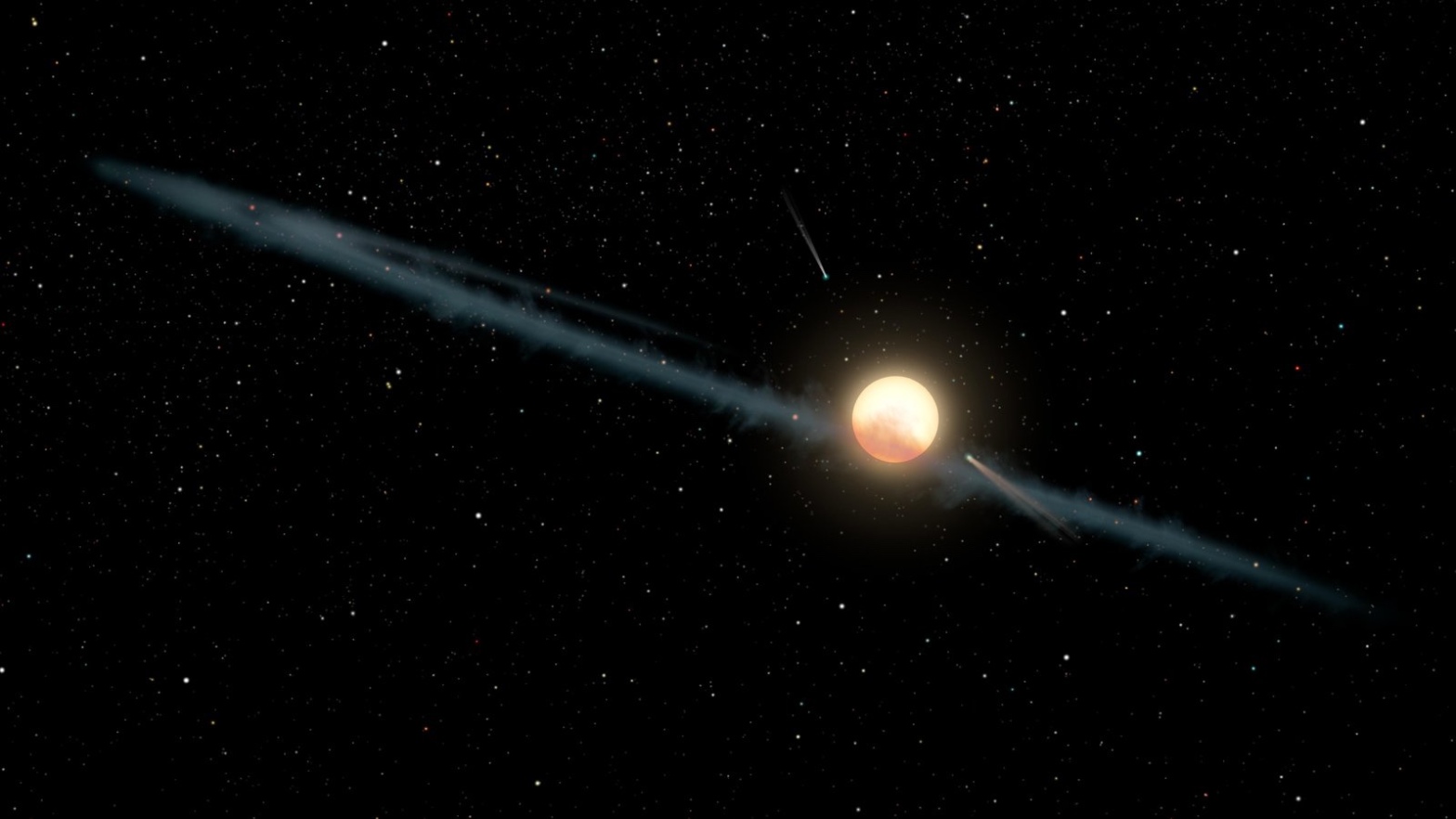In 2015, an abnormal dimming pattern of the star KIC 8462852 (Featured Image) was noticed by a research group headed by Tabetha Boyajian. It is located about 1480 light years away in the constellation Cygnus (Image 2). Following this discovery, the star was named “Tabby’s Star” after Boyajian and referred to as the “where’s the flux?” or WTF (an initialism of “where’s the flux?”) Star due to the fluctuations in the amount of light we can detect from it. It was the first star observed to dim in this way without an easily explainable cause.


The dimming of the star varies (Image 3), suggesting that the cause behind it is moving. During the fluctuations, the more extreme dips cause the amount of light we detect from the star to be between 75% and 80%. When the light has dimmed more, the amount of star spots present on the star increases. The fluctuations don’t seem to have a definitive pattern in the amount of timing of the dimming and return in brightness. The dimming does not effect all wavelengths. This is an important observation because it helped researchers come to a conclusion about the cause of the fluctuations experienced by Tabby’s Star.

Asteroids and collisions were quickly ruled out as possible causes. Comet fragments are also unlikely due to how long the object causing the episodes have gone on for. Planets are also unlikely because the light pattern for Tabby’s Star does not resemble expected alterations caused by a planet passing by a star. Even a large ringed planet couldn’t realistically cause this occurrence because the star’s radiation would pull the rings apart.
Another proposal that has been shot down is a Dyson Sphere was in the process of being constructed around the star by intelligent extraterrestrials. The ongoing building of this structure would account for the steady dimming, and since gaps in the structure would be required for it to function, that would account for the fluctuations in the amount of light we see. You could probably imagine why this idea was dismissed. For starters, we have yet to find any evidence of alien life that would be advanced enough to build such a structure. There are no radio signals we’ve detected from that area that contradict that statement either. A Dyson Sphere would affect all wavelengths, not just one, which also makes it an unlikely candidate.

So what is causing Tabby’s Star to behave so strangely? Most likely, an unevenly distributed ring of dust orbiting the star. Dust is so small, it would explain the independence of light wavelengths we’ve detected. However, this mundane seeming explanation does have an exciting aspect. It has been proposed that an exomoon is being pulled apart by the star, creating the dust (Martinez et al.). The continuing deterioration of this exomoon would explain why the overall dimming has decreased. This exomoon probably belonged to a planet that was consumed by the star. This can cause the exomoon to orbit the star and slowly be pulled apart by it.
So far, this is the most likely explanation for the cause behind the dimming of Tabby’s Star.
Bibliography
Anderson, P.S. (Sep 2019). Could a melting exomoon explain Tabby’s Star? Retrieved Jan 2, 2022 from EarthSky
Byrd, D. (May 2016). News about mystery star KIC 8462852 aka Tabby’s Star. Received Jan 1, 2022 from EarthSky
Byrd, D. (Jun 2016). Help astronomers observe Tabby’s Star. Retrieved Jan 2, 2022 from EarthSky
Byrd, D. (Aug 2016). Tabby’s Star: More weirdness. Retrieved Jan 2, 2022 from EarthSky
Cooper, K. (Nov 2015). UPDATED: Are comet fragments best explanation for mysterious dimming star? Retrieved Jan 1, 2022 from Astronomy Now
Cooper, K. (Aug 2016). Kepler finds Tabby’s Star is mysteriously dimming. Retrieved Jan 1, 2022 from Astronomy Now
Landau, E. (Oct 2017). Mysterious Dimming of Tabby’s Star May Be Caused by Dust. Retrieved Jan 2, 2022 from Caltech – Spitzer Space Telescope
Martinez, M. et al. (Sep 2019). Orphaned exomoons: Tidal detachment and evaporation following an exoplanet–star collision. Monthly Notices of the Royal Astronomy Society, 489(4), 5119–5135. https://doi.org/10.1093/mnras/stz2464
New Data Debunks Alien Megastructure Theory on the ‘Most Mysterious Star in the Universe’. (Jan 2018). Retrieved Jan 2, 2022 from LSU Media Center
New observations help explain the dimming of Tabby’s Star. (Sep 2019). Retrieved from Jan 2, 2022 from Phys.org
Shostak, S. (Sep 2017). Has Tabby’s Star Mystery Finally Been Solved? Retrieved Jan 2, 2022 from NBC News
